Casio WVA-M490D-1AER Handleiding
Bekijk gratis de handleiding van Casio WVA-M490D-1AER (5 pagina’s), behorend tot de categorie Horloge. Deze gids werd als nuttig beoordeeld door 31 mensen en kreeg gemiddeld 4.4 sterren uit 16 reviews. Heb je een vraag over Casio WVA-M490D-1AER of wil je andere gebruikers van dit product iets vragen? Stel een vraag
Pagina 1/5

Operation Guide 4709 4713
1
MO090 -7EB
Getting Acquainted
Congratulations upon your selection of this CASIO watch. To get the most out of your
purchase, be sure to read this manual carefully.
Expose the watch to bright light to charge its battery before using it.
You can use this watch even as its battery is being charged by exposure to bright light.
•Be sure to read “Power Supply” of this manual for important information you
need to know when exposing the watch to bright light.
Keep the watch exposed to bright light
The electricity generated by the solar cell of the watch is
stored by a built-in battery. Leaving or using the watch where
it is not exposed to light causes the batter y to run down.
Make sure the watch is exposed to light as much as possible.
•
When you are not wearing the watch on your wrist,
position the face so it is pointed at a source of bright light.
•You should try to keep the watch outside of your sleeve
as much as possible. Charging is reduced significantly if
the face is only partially covered.
l
l
l
l
l
l
l
l
l
l
l
Bright Light
Solar cell
•The watch continues to operate, even when it is not exposed to light. Leaving the
watch in the dark can cause the battery to run down, which will result in some watch
functions to be disabled. If the battery goes dead, you will have to re-configure watch
settings after recharging. To ensure normal watch operation, be sure to keep it
exposed to light as much as possible.
All
functions
enabled
LEVEL 1
LEVEL 2
LEVEL 3
LEVEL 4
Charge
Rechargeable battery
Bright Light
Electrical
energy
Solar cell
(Converts light to
electrical power.)
LEVEL 1
LEVEL 2
LEVEL 3
LEVEL 4
Some or all
functions
disabled
Dis-
charge
Battery charges in the light. Battery discharges in the dark.
•The actual level at which some functions are disabled depends on the watch model.
•Be sure to read “Power Supply” for important information you need to know
when exposing the watch to bright light.
If the display of the watch is blank...
If the display of the watch is blank, it means that the watch’s Power Saving function
has turned off the display to conserve power.
•See “Power Saving Function” for more information.
Note that CASIO COMPUTER CO., LTD. assumes no responsibility for any
damage or loss suffered by you or any third party arising through the use of this
product or its malfunction.
About This Manual
•The operational procedures for Modules 4709 and 4713
are identical. All of the illustrations in this manual show
Module 4713.
•Most of the display examples in this manual show only
the digital display, without the analog hands.
•Button operations are indicated using the letters shown
in the illustration.
•Each section of this manual provides you with the
information you need to perform operations in each
mode. Further details and technical information can be
found in the “Reference” section.
Module 4709
Module 4713
▲
Dual Time Mode
Alarm ModeStopwatch Mode
General Guide
•Press B to change from mode to mode.
•In any mode (except when a setting screen is on the display), press to illuminateA
the display.
•When setting the time, you can also configure settings for the language of the day of
the week indicator (English or Japanese).
Press .B
Battery Level Indicator
▲
▲
▲
Hand Setting Mode
▲
Last signal screen
Timekeeping Mode
▲
▲
Radio-controlled Atomic Timekeeping
This watch receives a time calibration signal and updates
its time setting accordingly.
•Supported time calibration signals: Germany
(Mainflingen), England (Anthorn), United States (Fort
Collins), Japan.
Current Time Setting
This watch adjusts its time setting automatically in
accordance with a time calibration signal. You can also
perform a manual procedure to set the time and date,
when necessary.
•The first thing you should do after purchasing this watch
is to specify your Home Time Zone, which is the time
zone where you normally will use the watch. For more
information, see “To specify your Home Time Zone”.
Day of week
Seconds
Date
•When using the watch outside the areas covered by the time signal transmitters, you
will have to adjust the current time setting manually as required. See “Timekeeping”
for more information about manual time settings.
•The U.S. time calibration signal can be picked up by the watch while in North
America. The term “North America” in this manual refers to the area that consists of
Canada, the continental United States, and Mexico.
• The analog time of this watch is synchronized with the digital time. Because of this,
the analog time setting is automatically adjusted whenever you change the digital
setting. See “Analog Timekeeping” for more information.
To specify your Home Time Zone
1. In the Timekeeping Mode, hold down the UTCA
differential value starts to flash, which indicates the
setting screen.
•Though illumination will also turn on when you press
A, keep the button held down until UTC differential
value flashes.
2. Press to select the time zone you want to use asC
your Home Time Zone.
•Time calibration signal reception is supported when
any one of the time zones shown in the table below is
selected as your Time Zone.
Time zone
I
I
I
I
I
I
I
I
I
I
I
I
I
I
I
I
I
I
I
I
I
U.S. Signal
UTC differential value
UTC –10
UTC –9
UTC –8
UTC –7
UTC –6
UTC –5
Japan Signal
UTC differential value
UTC +8
UTC +9
German/U.K. Signal
UTC differential value
UTC +0
UTC +1
UTC +2
3. Press A to exit the setting screen.
Important!
•Normally, your watch should show the correct time as soon as you select your Home
Time Zone. If it does not, it should adjust automatically after the next auto receive
operation (in the middle of the night). You can also perform manual receive or you
can set the time manually.
•The watch will receive the time calibration signal automatically from the applicable
transmitter (in the middle of the night) and update its settings accordingly. For
information about the relationship between time zones and transmitters, see “Home
Time Zones and Transmitters”.
•Under factory default settings, auto receive is turned off for all of the following time
zones : UTC +8, UTC –10, and UTC –9. For details about turning on auto receive for
these time zones, see “To turn auto receive on and off”.
•You can disable time signal reception, if you want. See “To turn auto receive on and
off” for more information.
•See the maps under “Approximate Reception Ranges” for information about the
reception ranges of the watch.
•If you are in an area that does not use Daylight Saving Time (summer time), turn off
the DST setting.
Time Calibration Signal Reception
There are two different methods you can use to receive the time calibration signal:
auto receive and manual receive.
•Auto Receive
With auto receive, the watch receives the time calibration signal automatically up to
six times a day. When any auto receive is successful, the remaining auto receive
operations are not performed. For more information, see “About Auto Receive”.
•Manual Receive
Manual receive lets you start a time calibration receive operation with the press of a
button. For more information, see “To perform manual receive”.

Operation Guide 4709 4713
2
Important!
•When getting ready to receive the time calibration signal, position the watch as
shown in the nearby illustration, with its 12 o’clock side facing towards a window.
This watch is designed to receive a time calibration signal late at night. Because of
this, you should place the watch near a window as shown in the illustration when you
take it off at night. Make sure there are no metal objects nearby.
12 o’clock
or
•Make sure the watch is facing the right way.
•Proper signal reception can be difficult or even impossible under the conditions listed
below.
•Signal reception normally is better at night than during the day.
•Time calibration signal reception takes from two to seven minutes, but in some
cases it can take as long as 14 minutes. Take care that you do not perform any
button operations or move the watch during this time.
Inside or
among
buildings
Inside a
vehicle
Near
household
appliances,
office
equipment,
or a mobile
phone
Near a
construction
site, airport,
or other
sources of
electrical
noise
Near high-
tension
power lines
Among or
behind
mountains
•The time calibration signal the watch will attempt to pick up depends on its current
Home Time Zone setting as shown below. If you use the watch in Japan or Europe
(each of which has two different transmitter locations), it will try to receive the time
calibration signal from one of the transmitters in your current location. If it cannot
receive the signal, it will then try to receive the time calibration signal from the other
transmitter.
Home Time Zone
UTC +0
UTC +1
UTC +2
UTC +8
UTC +9
UTC –10
UTC –9
UTC –8
UTC –7
UTC –6
UTC –5
Frequency
60.0 kHz
77.5 kHz
40.0 kHz
60.0 kHz
60.0 kHz
Transmitter
Anthorn (England)
Mainflingen (Germany)
Fukushima (Japan)
Fukuoka/Saga (Japan)
Fort Collins, Colorado
(the United States)
Home Time Zones and Transmitters
Approximate Reception Ranges
U.K. and German Signals
Fort Collins
600 miles
(1,000 kilometers)
Fukuoka/Saga
500 kilometers Fukushima
500 kilometers
U.S. Signal
Japan Signals
2,000 miles
(3,000 kilometers)
1,000 kilometers
1,000 kilometers
Anthorn
1,500 kilometers
The Anthorn signal
is receivable within
this area.
500 kilometers
Mainflingen
•Signal reception may not be possible at the distances noted below during certain
times of the year or day. Radio interference may also cause problems with reception.
Mainflingen (Germany) or Anthorn (England) transmitters: 500 kilometers (310
miles)
Fort Collins (United States) transmitter: 600 miles (1,000 kilometers)
Fukushima or Fukuoka/Saga (Japan) transmitters: 500 kilometers (310 miles)
•Even when the watch is within the reception range of the transmitter, signal
reception will be impossible if the signal is blocked by mountains or other geological
formations between the watch and signal source.
•Signal reception is affected by weather, atmospheric conditions, and seasonal
changes.
•See the information under “Signal Reception Troubleshooting” if you experience
problems with time calibration signal reception.
Your Home Time Zone Auto Receive Start Times
123456
UTC +0
(DST ON : UTC +1)
UTC +1
(DST ON : UTC +2)
Standard Time
Daylight
Saving Time
Standard Time
Daylight
Saving Time
1:00 am
2:00 am
2:00 am
3:00 am
2:00 am
3:00 am
3:00 am
4:00 am
3:00 am
4:00 am
4:00 am
5:00 am
4:00 am
5:00 am
5:00 am
Midnight
next day
5:00 am
Midnight
next day
Midnight
next day
1:00 am
next day
Midnight
next day
1:00 am
next day
1:00 am
next day
2:00 am
next day
About Auto Receive
The watch receives the time calibration signal automatically up to six times a day.
When any auto receive is successful, the remaining auto receive operations are not
performed. The reception schedule (calibration times) depends on your currently
selected Home Time Zone, and whether standard time or Daylight Saving Time is
selected for your Home Time Zone.
UTC +2
(DST ON : UTC +3)
UTC +8
UTC +9
UTC 9)–10 (DST ON : UTC –
UTC 8)– 9 (DST ON : UTC –
UTC 7)– 8 (DST ON : UTC –
UTC 6)– 7 (DST ON : UTC –
UTC 5)– 6 (DST ON : UTC –
UTC 4)– 5 (DST ON : UTC –
Standard Time
Daylight Saving
Time
Standard Time
Standard Time
Daylight Saving
Time
3:00 am
4:00 am
Midnight
Midnight
4:00 am
5:00 am
1:00 am
1:00 am
5:00 am
Midnight
next day
2:00 am
2:00 am
Midnight
next day
1:00 am
next day
3:00 am
3:00 am
1:00 am
next day
2:00 am
next day
4:00 am
4:00 am
2:00 am
next day
3:00 am
next day
5:00 am
5:00 am
Note
•When a calibration time is reached, the watch will receive the calibration signal only
if it is in either the Timekeeping Mode or Dual Time Mode. Reception is not
performed if a calibration time is reached while you are configuring settings.
•Auto receive of the calibration signal is designed to be performed early in the
morning, while you sleep (provided that the Timekeeping Mode time is set correctly).
Before going to bed for the night, remove the watch from your wrist, and put it in a
location where it can receive the signal easily.
•The watch receives the calibration signal for two to 14 minutes everyday when the
time in the Timekeeping Mode reaches each of the calibration times. Avoid
performing any button operation within five minutes before or after any one of the
calibration times. Doing so can interfere with correct calibration.
•Remember that reception of the calibration signal depends on the current time in the
Timekeeping Mode. The receive operation will be performed whenever the display
shows any one of the calibration times, regardless of whether or not the displayed
time actually is the correct time.
About the Receiving Indicator
During signal reception, the receiving indicator shows the strength of the calibration
signal being received. For best reception, be sure to keep the watch in a location
where signal strength is strongest.
Weak
(Level 0)
Strong
(Level 3)
Receiving indicator
•Use the receiving indicator as a guide for checking signal strength and for finding the
best location for the watch during signal receive operations.
•Even in an area where signal strength is strong, it takes about 10 seconds for signal
reception to stabilize enough for the receiving indicator to indicate signal strength.
I
I
I
I
I
I
I
I
I
I
I
I
I
I
I
I
Transmitter Indicator
During signal reception, an indicator of the transmitter
whose signal the watch is attempting to receive will flash.
After signal reception is complete, the indicator of the
transmitter from which the signal was received will remain
on, without flashing.
•The following shows the meaning of each of the
transmitter indicator names.
JP40: Fukushima (Japan)
JP60: Fukuoka/Saga (Japan)
US60: Fort Collins, Colorado (the United States)
GE77.5: Mainflingen (Germany)
UK60: Anthorn (England)
•The transmitter indicator turns off automatically at the
start of the first auto receive operation of a new day. The
time of the first auto receive operation of a new day
depends on your currently selected Home Time Zone.
To perform manual receive
1. Enter the Timekeeping Mode or display the last signal
screen.
2.
Place the watch on a stable surface so its 12 o’clock side
is facing towards a window.
3.
Hold down for about two seconds until the watch beeps.C
4.
After you release C the display will show the letters RC.
This indicates that signal reception is in progress.
•The indicator of the transmitter whose signal the watch
is attempting to receive will flash.
•Time calibration signal reception takes from two to
14 minutes. Take care that you do not press C or move
the watch during this time.
•If the receive operation is successful, the reception date
and time appear on the display. The indicator of the
transmitter whose signal the watch received will also be
indicated.
The watch will enter the Timekeeping Mode if you press
C or if you do not perform any button operation for
about one or two minutes.
Transmitter indicator
Receiving
Receive successful
Receive date
I
I
I
I
I
I
I
I
I
I
I
I
I
I
I
I
I
I
I
I
I
I
I
I
I
I
I
I
▲
▲
▲
•If the current reception fails, the display shows the ERR
indicator.
The watch will enter the Timekeeping Mode without
changing the time setting if you press or if you do notC
perform any button operation for about one or two
minutes.
Receive failed

Operation Guide 4709 4713
3
To turn auto receive on and off
1. Press B to display the Last Signal screen.
2. Hold down A so the current auto receive setting (R/C
on or R/C OF) is flashing. This is the setting screen.
•Though illumination will also turn on when you press
A, keep the button held down until R/C on or R/C OF
flashes.
•Note that the setting screen will not appear if the
currently selected Home Time Zone is one that does
not support time calibration reception.
3. Press C to toggle auto receive on ( ) and off (on OF).
4. Press A to exit the setting screen.
•For information about time zones that support signal
receive, see “To specify your Home Time Zone”.
On/Off status
I
I
I
I
I
I
I
I
I
I
I
I
I
I
I
I
I
I
I
I
I
To check the latest signal reception results
Press B to display the Last Signal screen.
•The display shows the time and date that receive was
successful. - - : - - indicates that none of the reception
operations were successful.
•To return to the Timekeeping Mode, press B.
Receive date
Receive time
▲
▲
▲
Problem
Cannot perform
manual receive.
Time setting is
incorrect
following signal
reception.
Probable Cause
•The watch is not in the Timekeeping
Mode.
•Your current Home Time Zone is not one
of the following:
UTC +0 UTC +1 UTC +2 UTC +8, , , , UTC
+9 10, UTC –, UTC –9, UTC –8, UTC –7,
UTC UTC –6, or –5
( DST ON : UTC +1, UTC +2, UTC +3,
UTC +9 UTC +10, , UTC UTC –9, –8,
UTC UTC UTC –7, –6, UTC –5, or –4 )
•If the time is one hour off, the DST
setting may be incorrect.
•
The Home Time Zone setting is not correct
for the area where you are using the watch
.
What you should do
•
Enter the Timekeeping Mode
and try again
.
•
Select , ,UTC +0 UTC +1 UTC
+2, UTC +8, UTC +9, UTC
– – –10, UTC 9 UTC , 8 UTC,
– – –7, UTC 6 UTC , or 5
( DST ON : UTC +1, UTC +2,
UTC +3 UTC +9 UTC +10, , ,
UTC 9 UTC 8 UTC 7–, –, –,
UTC 6 5 UTC 4–, UTC –, or – )
as your Home Time Zone
.
•
Change the DST setting to
Auto DST
.
•
Select the correct Home Time
Zone
.
Signal Reception Troubleshooting
Check the following points whenever you experience problems with signal reception.
•For further information, see “Important!” under “Time Calibration Signal Reception”
and “Radio-controlled Atomic Timekeeping Precautions”.
Dual Time
The Dual Time Mode shows you the current time in 29
time zones around the world.
•If the current time shown for a time zone is wrong, check
your Home Time Zone time settings and make the
necessary changes.
•All of the operations in this section are performed in the
Dual Time Mode, which you enter by pressing B.
To view the time in another Time Zone
1. In the Dual Time Mode, press C to display the UTC differential value of the
currently selected time zone for about two seconds.
2. To change the UTC differential value, press C while a UTC differential value is on
the display to scroll eastward through time zones.
•Note that if you do not press C to scroll within two seconds after displaying a
UTC differential value, the display will change automatically to the current time
based on the currently displayed UTC differential value.
3. When the UTC differential value you want is on the display, do not perform any
button operation for about two seconds. This will cause the current time to appear,
which will be based on the UTC differential value you selected.
Current time
in selected
time zone
To toggle a time zone time between Standard Time and Daylight Saving Time
1. In the Dual Time Mode, use C to display the time zone
whose Standard Time/Daylight Saving Time setting you
want to change.
2. Hold down A to toggle Daylight Saving Time (DST
indicator displayed) and Standard Time (DST indicator
not displayed).
•Turning on DST causes the UTC differential value to be increased by one.
•Though illumination will also turn on when you press A, keep the button held down
until DST indicator displayed or indicator not displayed.DST
•The DST indicator will appear whenever you display a time zone for which Daylight
Saving Time is turned on.
•Note that the DST/Standard Time setting affects only the currently displayed time
zone. Other time zones are not affected.
•Note that you cannot switch between Standard Time and Daylight Saving Time while
UTC is selected as the time zone.
•Note that you cannot use the Dual Time Mode to change the DST setting of the
Home Time Zone you currently have selected in the Timekeeping Mode. See “To
change the Daylight Saving Time (summer time) setting” for information about
turning the Home Time Zone DST setting on and off.
DST indicator
Alarm
You can set a Daily Alarm. When an alarm is turned on, the alarm tone sounds when
the alarm time is reached.
You can also turn on an Hourly Time Signal that causes the watch to beep twice every
hour on the hour.
•When you enter the Alarm Mode, the screen you were viewing when you last exited
the mode appears first.
•All of the operations in this section are performed in the Alarm Mode, which you
enter by pressing B.
•In the Alarm Mode, you can press to toggle the display contents as shown below.C
Alarm screen Hourly Time Signal screen
Hourly time signal on/off status
Alarm time
(Hour: Minutes)
Timekeeping
Mode Seconds
To set an alarm time, and to turn Alarm on and off
1. In the Alarm Mode, use C to display the Alarm Screen.
2. Hold down A until the hour setting of the alarm time
starts to flash, which indicates the setting screen.
•Though illumination will also turn on when you press
A, keep the button held down until the hour setting of
the alarm time flashes.
•This operation automatically turns on the alarm.
3. Press to change the flashing contents in the sequence shown below to selectB
other settings.
Hour Minutes Alarm On/Off
I
I
I
I
I
I
I
I
I
I
I
I
I
4.
When the setting you want to change is flashing, use
C
to change it as described below.
Screen: To do this:
Change the hour or minutes
Toggle between alarm on ( ),
and alarm off ( )
Do this:
Use .C
Press C.
•When setting the alarm time using the 12-hour format, take care to set the time
correctly as a.m. (no indicator) or p.m. ( indicator).P
5. Press A to exit the setting screen.
Alarm Operation
The alarm sounds at the preset time for about 10 seconds.
Note
•Pressing any button stops the alarm tone operation.
To test the alarm
In the Alarm Mode, hold down to sound the alarm.C
I
I
I
I
I
I
I
I
I
I
I
I
I
I
I
I
I
I
I
I
I
To turn the hourly time signal on and off
1. In the Alarm Mode, use C to display the Hourly Time
Signal Screen.
2. Hold down A until the hourly time signal on/off status
starts to flash, which indicates the setting screen.
•Though illumination will also turn on when you press
A, keep the button held down until the hourly time
signal on/off status flashes.
•This operation automatically turns on the hourly time
signal.
3. Press C to toggle it on and off.
4. Press to exit the setting screen.A
On/off status
Stopwatch
The stopwatch lets you measure elapsed time.
•The display range of the stopwatch is 59 minutes, 59.99
seconds.
•The stopwatch continues to run, restarting from zero
after it reaches its limit, until you stop it.
•The stopwatch measurement operation continues even
if you exit the Stopwatch Mode.
•All of the operations in this section are performed in the
Stopwatch Mode, which you enter by pressing B.
Minutes
Seconds
Elapsed Time Measurement
Elapsed Time Screen
Seconds
1/100 seconds
Timekeeping
Mode Seconds Minutes
Seconds
Timekeeping
Mode Seconds
Minutes
Seconds
Timekeeping
Mode Seconds
1/100 seconds
•••••
Up to one minute •••••
From one minute
C
Start Stop
➤C
Re-start Clear
➤
Stop
C➤
C➤Hold downC
To measure times with the stopwatch
Elapsed Time
Illumination
An LED (light-emitting diodes) illuminate the digital display
for easy reading in the dark.
•See “Illumination Precautions” for other important
information.
To turn on illumination
•In any mode (except when a setting screen is on the
display), press A to illuminate the digital display.
•When turning on illumination, press A and immediately release it. If you keep A
held down too long, either of the operations described below will be peformed.
If you hold down A while in the Timekeeping Mode, Alarm Mode, or Hand
Setting Mode
The figures on the display will start to flash, which indicates the setting screen. If
this happens, press A again to exit the setting screen.
If you hold down while in the Dual Time ModeA
The DST setting will toggle between Standard Time and Daylight Saving Time,
which will affect the current time setting.
If this happens, hold down A again to toggle setting back to its original setting (if
necessary).
Product specificaties
| Merk: | Casio |
| Categorie: | Horloge |
| Model: | WVA-M490D-1AER |
| Gewicht: | 99 g |
| LED backlight: | Ja |
| Stopwatch: | Ja |
| Waterbestendig diepte: | 50 m |
| Alarm functie: | Ja |
| Agenda: | Ja |
| Klokmodus: | 12/24 uur |
| Horlogekast materiaal: | Roestvrijstaal |
| Band materiaal: | Roestvrijstaal |
| Batterij-indicator: | Ja |
| Zonnekracht: | Ja |
| Radio signaal ontvanger: | DCF/MSF/WWVB/JJY |
| Afmetingen (B x D x H): | 41.6 x 10 x 46.4 mm |
| Type batterij: | CTL1025 |
Heb je hulp nodig?
Als je hulp nodig hebt met Casio WVA-M490D-1AER stel dan hieronder een vraag en andere gebruikers zullen je antwoorden
Handleiding Horloge Casio
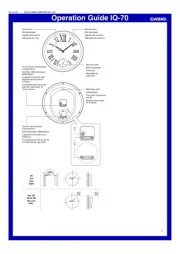
18 Juni 2025
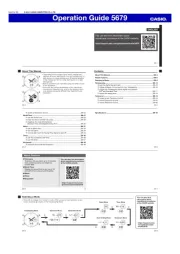
17 Juni 2025
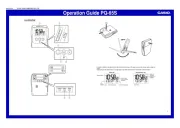
17 Juni 2025
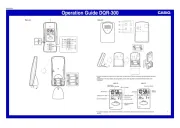
16 Juni 2025

16 Juni 2025
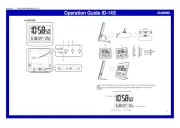
16 Juni 2025
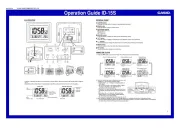
16 Juni 2025
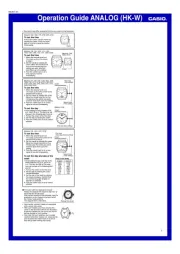
16 Juni 2025
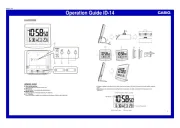
16 Juni 2025
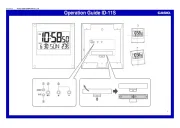
16 Juni 2025
Handleiding Horloge
- Ferrari
- AMS
- PAUL HEWITT
- Alessi
- Diesel
- Michael Kors
- Klaus Kobec
- Jaguar
- Daniel Steiger
- Fitbit
- Suunto
- Beper
- Timberland
- Adidas
- Christiaan Van Der Klaauw
Nieuwste handleidingen voor Horloge

5 Juli 2025

5 Juli 2025

4 Juli 2025

4 Juli 2025

4 Juli 2025

4 Juli 2025

4 Juli 2025

2 Juli 2025
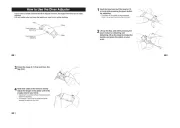
1 Juli 2025

21 Juni 2025